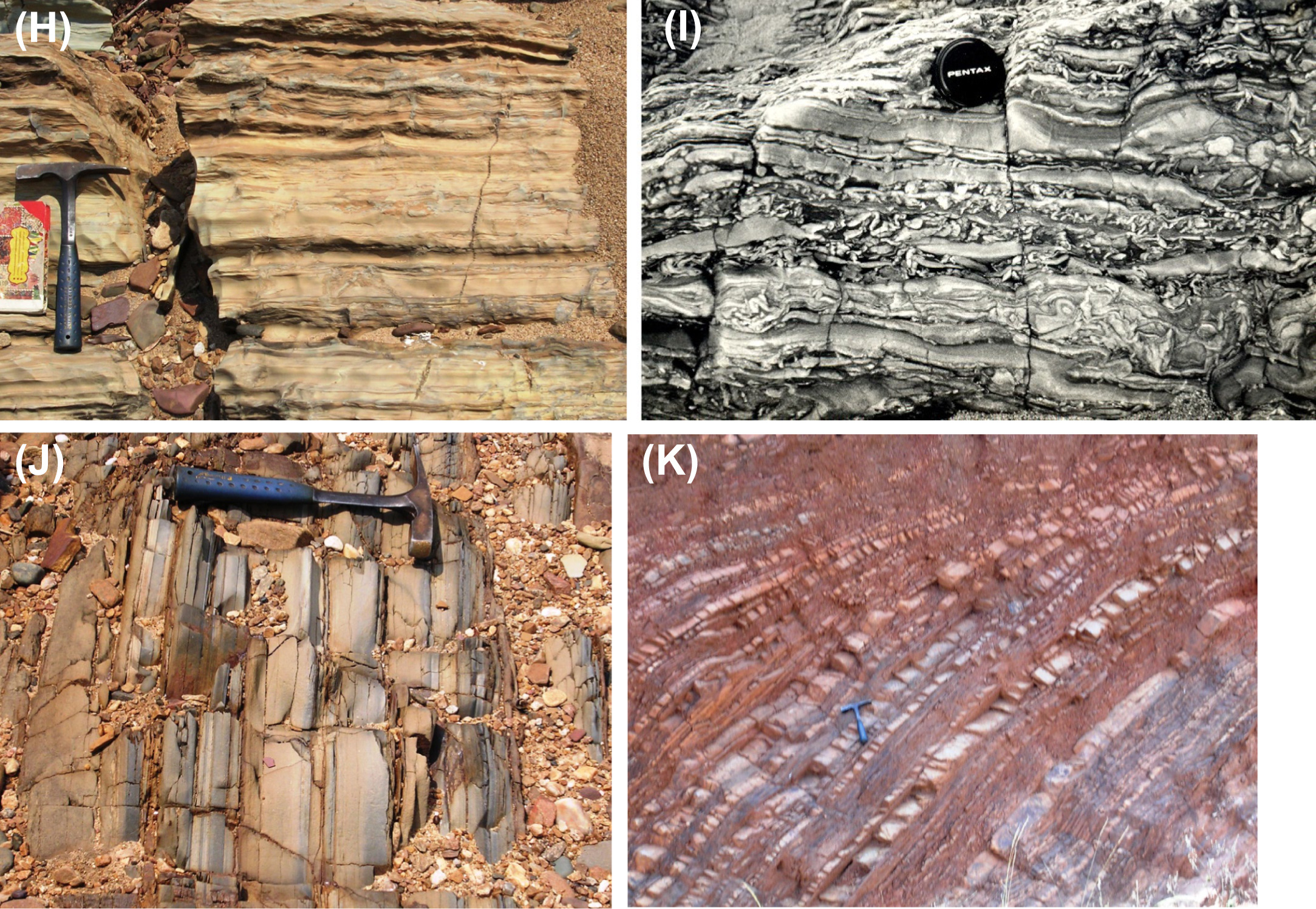Somnur Fm
Lithology and Thickness
Claystone to sandstone. Consists of plane laminated shale, calcareous shale with sparse, thin sandstone intercalations in the lower part grading upwards into coarse- to fine-grained, well-sorted quartz arenite with thin shale partings, and common occurrence of trough and herringbone cross-strata, asymmetric to interference ripples, and desiccation cracks. Heterolithic sandstone-shale with wavy and flaser bedding and synresis cracks (Fig. – image I), separate the two quartzite members within the formation. The upper quartzite grades into argillaceous limestone with thin stromatolite biostromes with algal lamination and locally abundant domal stromatolite, constituting the upper part of the Somnur Formation.
[Figure: Pranhita-Godavari valley basin Field photographs illustrating lithology and sedimentary structures. (H) Bodela Vagu Fm - Laminated lime mudstone. (I) Somnur Fm - Heterolithic sandstone-shale with profuse desiccation crack in-fills. (J) Tarur Nala Fm - Ash beds of Kotturu Somanpalli. (K) Tarur Nala Fm - Graywacke-shale turbidite with cherty intervals. (from Saha et al., 2016)]
Relationships and Distribution
Lower contact
Underlain by the Bodela Vagu Fm
Upper contact
Overlain by the Gutta Chert Fm
Regional extent
Approximately coeval with Ramgundam Sandstsone Fm of Mulug Gr of Pranhita-Godavari west basin
GeoJSON
Fossils
Age
Depositional setting
Intertidal flat, shoreface to shallow shelf
Additional Information
